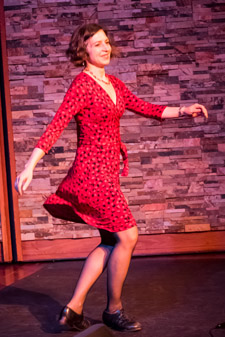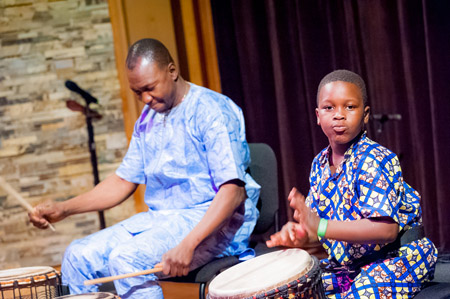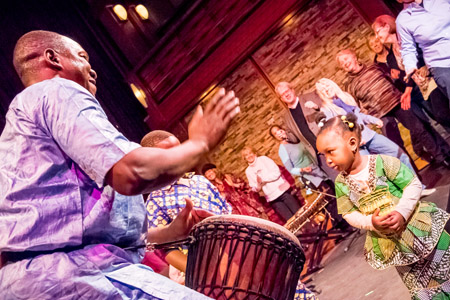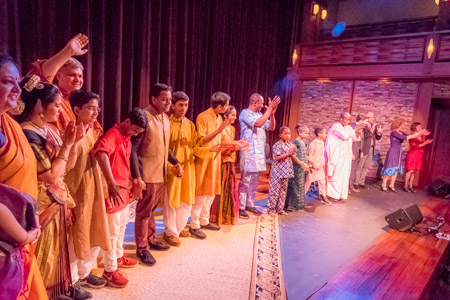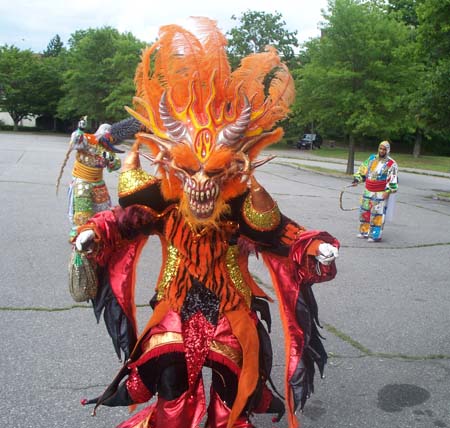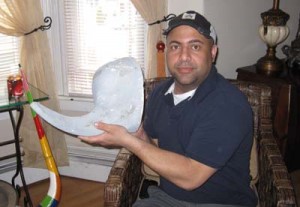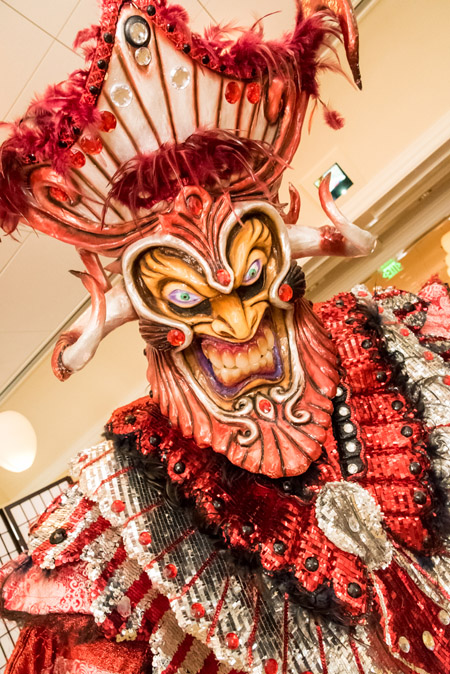
Despite gale force winds and rain on Mothers’ Day, the show went on. And what a show it was! We were delighted to have the opportunity to showcase a sampling of our state’s traditional artists to perform at one of the country’s most stunning concert halls — the Shalin Liu Performance Center in Rockport, Massachusetts. Performers were either past or current recipients of an Mass Cultural Council Artist Fellowship or Traditional Arts Apprenticeship. We’re happy to share some images shot by photographer Brendan Mercure.
No fewer that 20 members of Lawrence’s Asociación Carnavalesca de Massachusetts opened the show by processioning from the back of the hall, down the aisles and up onto the stage.
Mass Cultural Council executive director Anita Walker gave a warm welcome to all in attendance, pointing out the richness of hidden treasures we have in the Commonwealth, many of whom have come here as immigrants.
I followed her by introducing our South Indian Carnatic musicians, which included two master artists, Tara Anand Bangalore and Gaurish Chandrashekhar, and three apprentices, Sudarshan Thirumalai, Pratik Bharadwadj, and Kaasinath Balagurunath. A purely musical segment was followed by Bharatanatyam dancer Sridevi Thirumalai.
The second half of the show opened with a beautiful set of Irish music by Joey Abarta, Matt and Shannon Heaton, and sean nos dancer Kieran Jordan.
We closed the concert with West African music and dance led by virtuoso balafon player Balla Kouyaté and master drummer/dancer Sidi “Joh” Camara. Both are considered hereditary artists, meaning they were born into the tradition.
Joining them on the stage was the next generation — Tiemoko Camara and Jossira and Sekou Balla Kouyaté — all of whom show great promise in carrying the traditions forward.
Balla stood up to invite audience members to join them on stage to dance.
Jossira helped by stepping down off the stage and reaching out her hand, encouraging people to join her. It worked – even 18-month old Maiya Camara got into the act.
Then it was time for a final bow. One of the magical things that happens when you bring musicians together from different world traditions is that they soon find common ground. This often happens back stage, behind the scenes. As one of our stage managers Sara Glidden pointed out, “All of you in the audience missed one of the highlights – the Indian musicians in the green room, jamming along to the video/audio feed of the Irish musicians on stage.”
Postscript: This email from leader of the Dominican masqueraders Stelvyn Mirabal gets to the heart of what our work as folklorists is all about. “I was received like a hero at my work on Monday. My Human Resources boss was at the show on Sunday and she didn’t know I was involved in the event until she saw me there. She took some pictures and posted in the company website. Then everyone was congratulating me for the show. She loved it!! Thanks again for thinking of us for your show.”
Talk about “hiding in plain sight”!
Maggie Holtzberg manages the Folk Arts & Heritage Program at the Mass Cultural Council.






